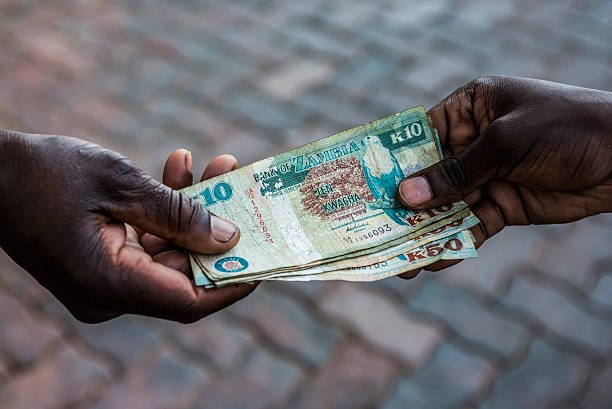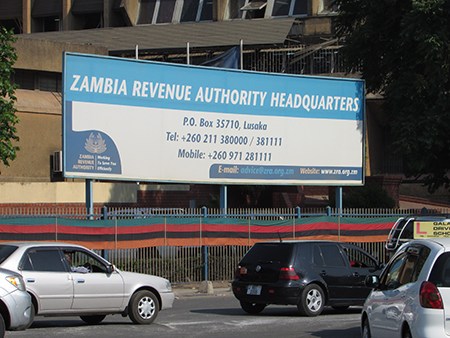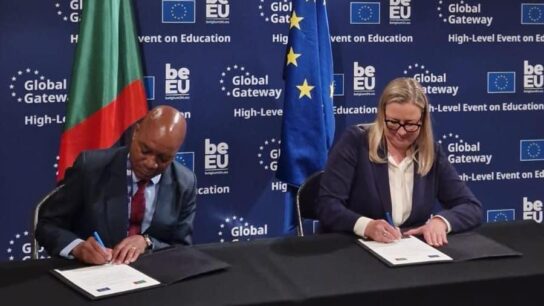• The bank has cited rising food inflation and the need to contain inflation expectations.
• Inflation moved away from the current and projected target range of between 6 to 8 percent.
• In 2023, inflation is projected to average 10.2 percent, marginally lower than the 10.3 percent in the May forecast.
Bank of Zambia has raised its key benchmark lending rate by 50 basis points to 10 percent for the third quarter of 2023, after lifting it to 9.5% at its May Monetary Policy Committee (MPC) meeting.
The bank has cited rising food inflation and the need to contain inflation expectations as some of the reasons that informed its decision to raise the Monetary Policy Rate (MPR).
Addressing Journalists during the 3rd quarter media briefing, Bank Governor Dr. Denny Kalyalya noted that inflation moved away from the current and projected target range of between 6 to 8 percent.
He observed that after declining for six consecutive quarters, inflation rate rose in quarter 2 or 2023 to 9.9 percent from 9.6 percent in quarter 1 of the same year.
“The Committee also took into account financial sector stability and sluggish growth in its decision. The lagged pass-through from the depreciation of the Kwacha against the US dollar, higher maize grain and meat prices, reduced supply of vegetables, and the upward adjustment in electricity tariffs explain this outturn.”
“In July, inflation accelerated to 10.3 percent from 9.8 percent in June as some of the identified risks identified in the May Meeting material led in Q2 2023,” Dr. Kalyalya noted.
He added that inflationary pressures are expected to persist over the forecast horizon with inflation projected to remain above the 6-8 percent target band.
“In 2023, inflation is projected to average 10.2 percent, marginally lower than the 10.3 percent in the May forecast. However, in 2024, inflation is projected to average 9.3 percent, higher than the 8.4 percent projected in May 2023. In the first half of 2025, inflation is projected to remain unchanged at 9.3 percent.”
“Elevated maize grain prices and tight global financial conditions are the key factors underlying the current inflation outlook. The foregoing factors as well as higher global food and energy prices due to the prolonged Russia-Ukraine war remain key upside risks to the inflation outlook,” he stated.
With regards to the performance of the Kwacha, Dr. Kalyalya said the local unit depreciated by 11 percent to K19.48 between end of June and August 22, 2023, while it appreciated by 4.8 percent against the US dollar in the second quarter.
He attributed the Kwacha’s poor performance between June and August 2023, to low supply of foreign exchange amid rising demand for Forex resulting from positive market sentiments related to external debt restructuring agreement reached with the Official Creditors to Zambia under the G20 Common Framework.
“To moderate exchange rate volatility and support critical imports, the Bank continued to provide liquidity to the market. In this regard, US$300 million was provided to the market, largely from mining sector tax receipts of US$242 million,” Dr. Kalyalya stated.
Meanwhile, Dr. Kalyalya revealed that Gross International Reserves declined to US$2.7 billion, equivalent to 2.9 months of import cover as at the end of June 2023, from US$2.9 billion, equivalent to 3.3 months of import cover at the end of March 2023.
He said this was due to Bank of Zambia support to the foreign exchange market, coupled with Government use of foreign exchange and external debt servicing.
The current account deficit widened slightly to US$198.1 million equivalent to 3.1 percent of GDP from US$188.7 million or 2.9 percent of GDP in Q1 2023.
“This was largely driven by the rise in imports as exports declined and credit on income attributable to financial corporations, non-financial corporations, and households reduced.”
“For 2023, the current account is projected to record a deficit of US$0.9 billion, mostly due to a sharp decline in export earnings, while imports continue to recover post-COVID-19 pandemic. However, the current account is projected to recover in the medium-term as net exports rebound,” he said.
According to Bank of Zambia, the country’s Gross Domestic Product (GDP) growth is projected to be lower in 2023, owing to a further contraction in the mining sector and the slowdown in the education and electricity sectors.
Growth is however expected to pick-up over the medium-term 2024-2025, underpinned by the projected recovery in the mining sector and sustained growth in the information and communications, financial and insurance as well as wholesale and retail trade sectors.







